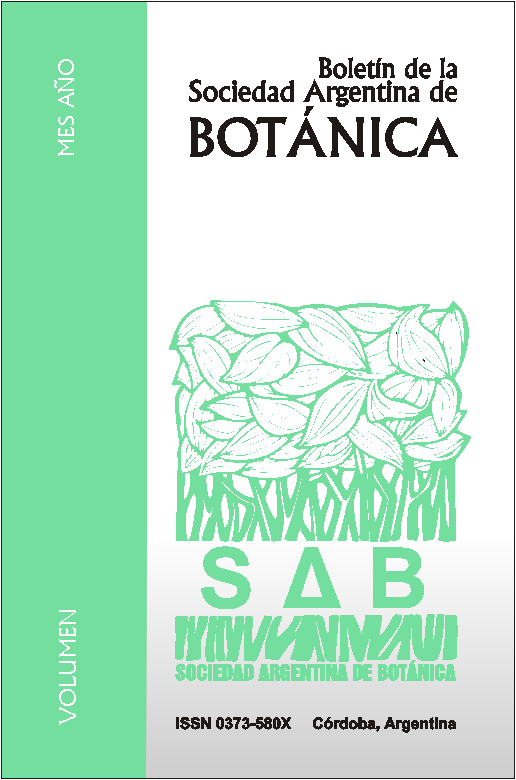Small but important: The woody vegetation communities on the sandstone outcrops of Teyú Cuaré (Misiones, Argentina)
DOI:
https://doi.org/10.31055/1851.2372.v53.n3.21315Keywords:
Rock outcrops, phytosociology, rupestrian vegetation, endemic species.Abstract
Rock outcrops are commonly harsh environments that maintain important components of biodiversity because they are inhabited by endemic or relictual species. We studied the diversity and structure of the woody plant of rupestrian vegetation located in the San Ignacio department (Misiones, Argentina), and evaluated the beta diversity with respect to other neighbor vegetation formation (i.e. forest and savanna). We found 32 species, most of them were arboreal nonetheless of small size. Qualea cordata (Mart.) Spreng., Monvillea euchlora Backeb., Ocotea lancifolia (Schott) Mez and Myrciaria delicatula (DC.) O.Berg were the most important in the community structure. Rupestrian vegetation showed an intermediate woody species diversity compared to nearby forests and savannas. We found a high beta diversity between rupestrian formation and the other physiognomies mainly established by richness difference. Rock environments are high-priority conservation level because their singular plant communities inhabit specific edaphic and geomorphic conditions, occurring only in a restricted geographical range.
Downloads
Published
Issue
Section
License
Provides immediate and free OPEN ACCESS to its content under the principle of making research freely available to the public, which fosters a greater exchange of global knowledge, allowing authors to maintain their copyright without restrictions.
Material published in Bol. Soc. Argent. Bot. is distributed under a Creative Commons Attribution-NonCommercial-ShareAlike 4.0 International license.





